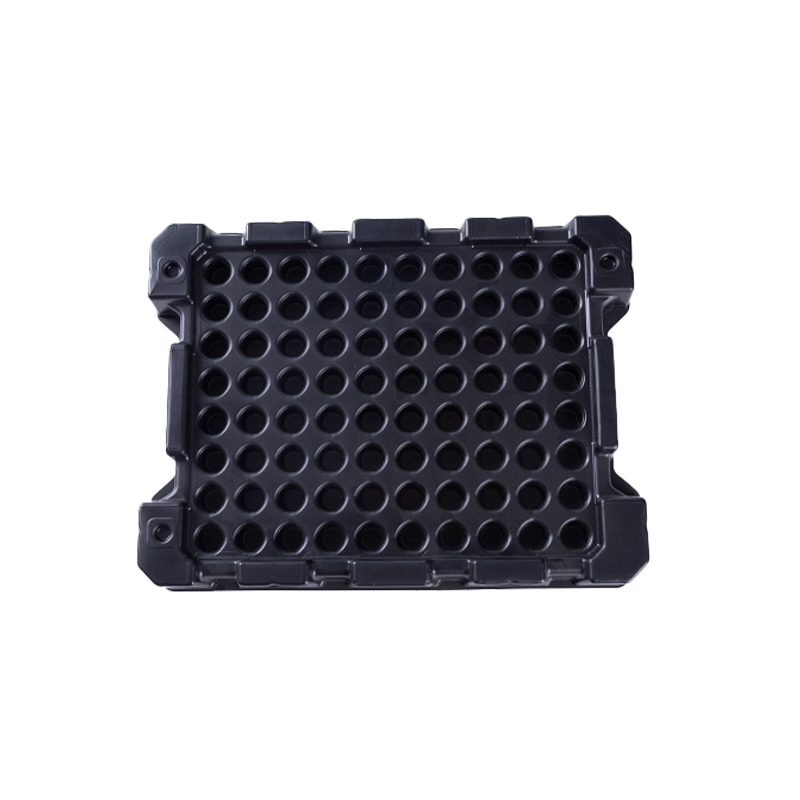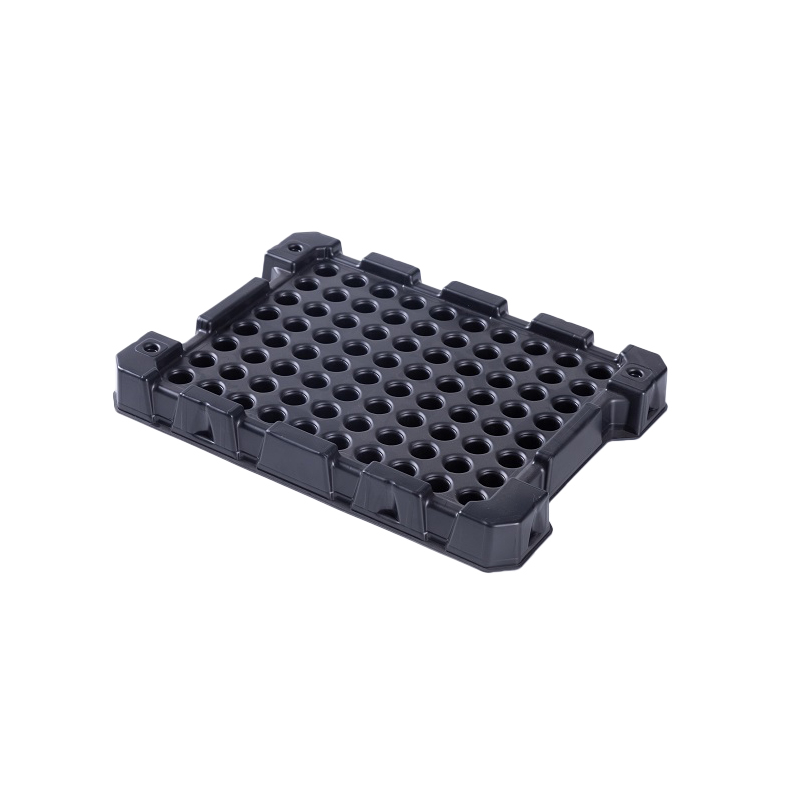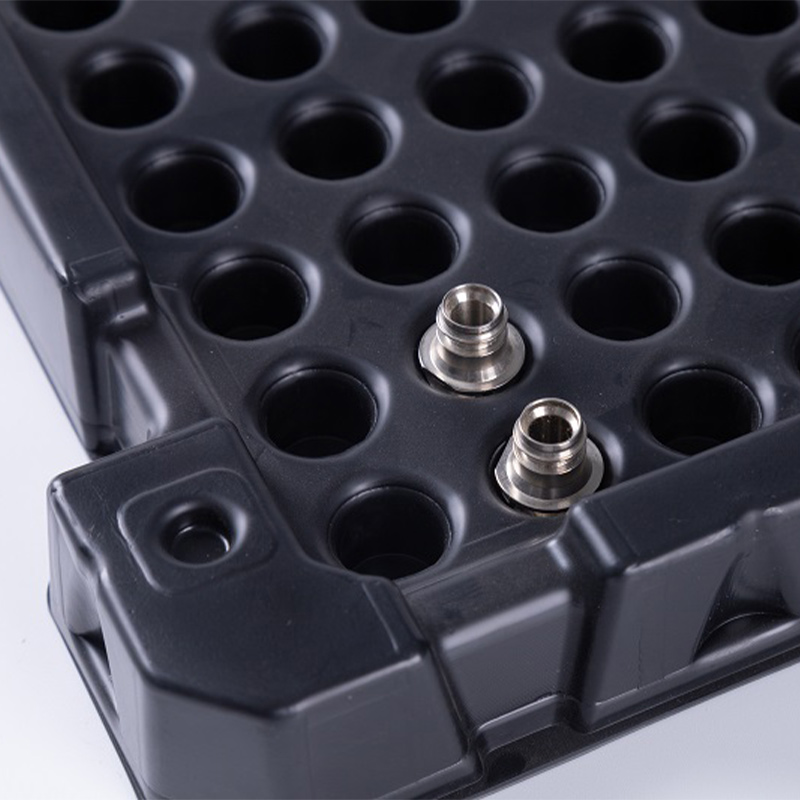Vacuum Formed Plastic Electronic Part Tray
The material of products are antistatic plastic,such as ps, pet, pvc, abs,etc.
The structure of trays can be customized base on cutomer's requirements.
Details
The material of products are antistatic plastic,such as ps, pet, pvc, abs,etc.
The structure of Vacuum Formed Plastic Electronic Part Tray can be customized base on cutomer's requirements.
Vacuum trays can be designed to be ones what are suitable for automatic lines.
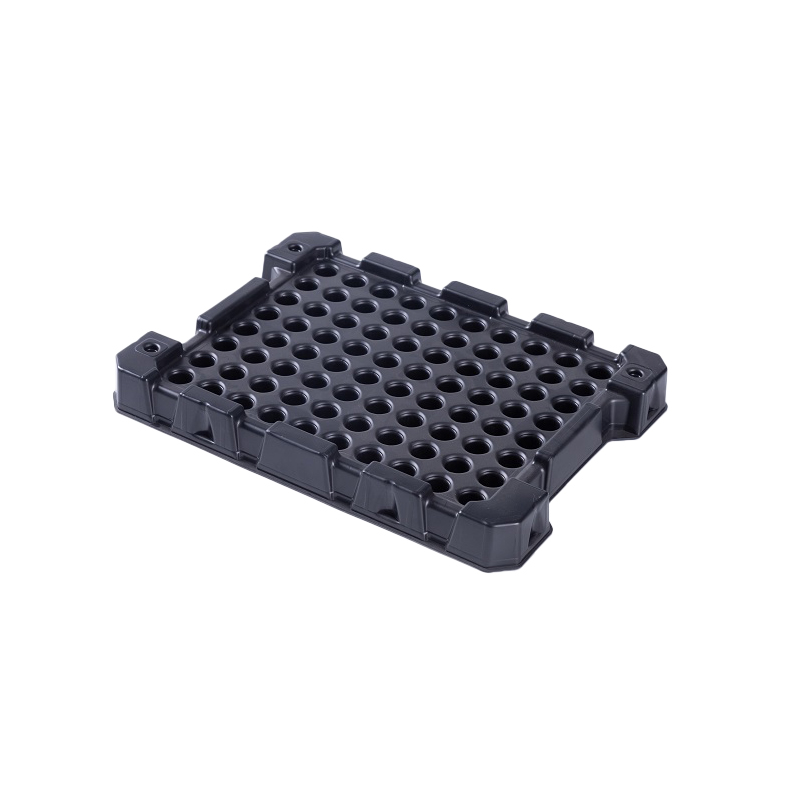
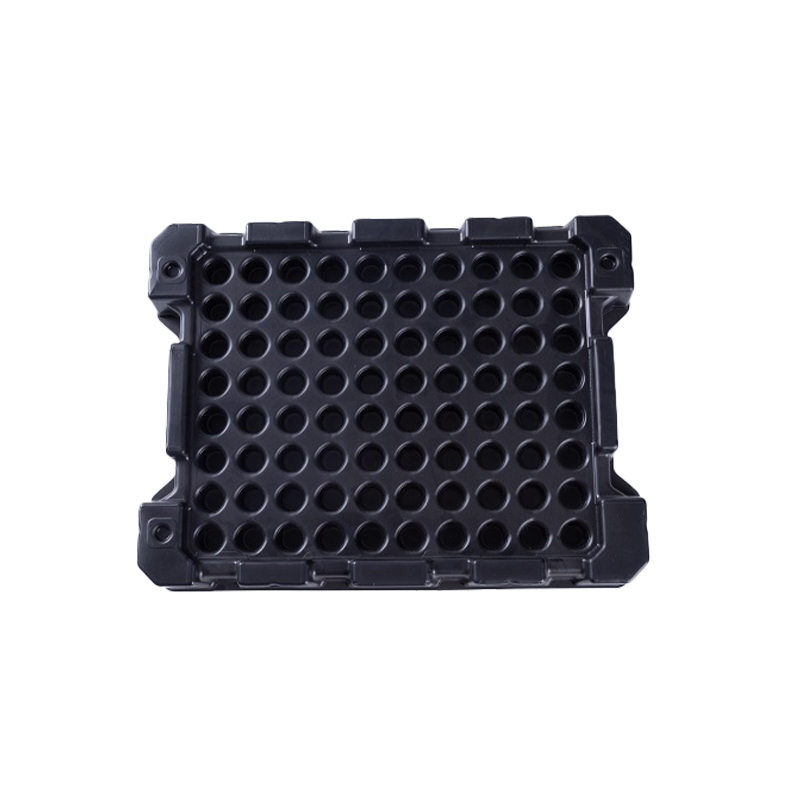
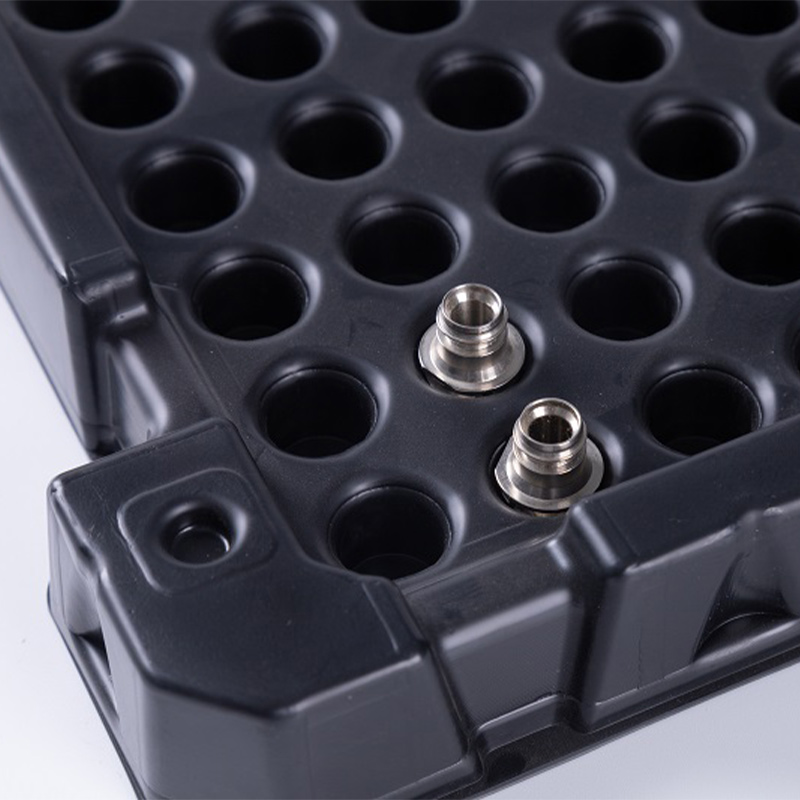
1. Introduction to Vacuum Formed Tray for Electronic Part Tray
A vacuum formed tray is a crucial packaging solution designed to safely store and transport delicate electronic components. The electronic part tray is crafted using vacuum forming technology to provide an effective solution for industries such as consumer electronics, automotive electronics, telecommunications, and aerospace. A high-quality vacuum formed plastic tray ensures that microchips, PCBs, and semiconductors are well-organized and protected.
By using a vacuum electronic tray, companies can optimize storage and streamline assembly line processes. The electronic part tray is lightweight, stackable, and tailored for specific electronic components, reducing handling risks and improving operational efficiency. A properly designed vacuum formed tray minimizes contamination, shock, and electrostatic damage, making it an ideal packaging choice for modern industries.
2. Manufacturing Process of Vacuum Formed Plastic Tray for Electronic Part Tray
Producing a vacuum formed tray for electronic components involves several key steps:
Material Selection – The vacuum formed plastic tray is made from thermoplastics such as ABS, PETG, HIPS, or conductive plastics, ensuring optimal strength and protection.
Heating Process – The plastic sheet is heated to a specific temperature to become pliable.
Vacuum Forming – The heated plastic is placed over a custom mold, and vacuum suction pulls the material tightly against the mold’s surface, creating the desired electronic part tray shape.
Cooling and Trimming – The vacuum electronic tray is cooled, trimmed, and refined for a precise fit.
Quality Inspection – Each vacuum formed tray undergoes thorough testing to ensure consistency, durability, and ESD resistance.
This manufacturing process allows for cost-effective mass production while ensuring that every vacuum formed plastic tray meets industry standards.
3. Material Selection for Vacuum Formed Electronic Part Tray
The electronic part tray must be made from high-quality, durable materials to meet the industry’s strict requirements. Some of the most commonly used materials include:
ABS (Acrylonitrile Butadiene Styrene) – Ideal for reusable vacuum formed trays due to its strength and impact resistance.
HIPS (High-Impact Polystyrene) – A lightweight and affordable option for disposable electronic part trays.
PETG (Polyethylene Terephthalate Glycol) – Known for its chemical resistance and clarity, commonly used in medical-grade vacuum formed plastic trays.
Conductive and ESD-Safe Plastics – Essential for vacuum electronic trays that need to protect sensitive electronics from electrostatic discharge.
Choosing the right material enhances the functionality and longevity of a vacuum formed tray, ensuring its effectiveness in industrial applications.
4. Applications of Vacuum Formed Electronic Part Tray
A vacuum formed tray serves a wide range of applications in industries where secure handling of electronic components is required.
4.1 Consumer Electronics
A vacuum formed plastic tray is used to organize and protect microchips and circuit boards.
Mobile phone components are stored and transported using an electronic part tray.
Camera modules and LED displays are safely packaged in a vacuum electronic tray.
4.2 Automotive Electronics
Engine control units (ECUs) are stored in a secure electronic part tray to prevent damage.
Sensors and wiring harnesses are transported in a vacuum formed tray for efficient handling.
4.3 Aerospace and Medical Electronics
Avionics components are protected in a vacuum electronic tray to withstand extreme conditions.
Medical scanning equipment requires a specialized vacuum formed plastic tray to ensure sterility and security.
4.4 Industrial and Telecommunications Equipment
Networking components are stored in a vacuum electronic tray for safe transport.
Fiber optic components require a structured electronic part tray for secure placement.
A well-structured vacuum formed tray ensures organization, safety, and efficiency in handling valuable electronic parts.
5. Key Benefits of Vacuum Formed Plastic Tray for Electronic Part Tray
5.1 Protection and Durability
Shock absorption – The vacuum formed tray prevents impact damage to delicate electronic parts.
ESD protection – A vacuum electronic tray prevents static electricity from damaging sensitive components.
Contaminant resistance – A vacuum formed plastic tray prevents dust, dirt, and moisture from affecting electronic parts.
5.2 Cost-Effective and Lightweight
Lower production costs – A vacuum formed tray is more affordable than injection-molded packaging.
Reduced shipping costs – A vacuum formed plastic tray is lightweight and stackable, minimizing transportation expenses.
Space-saving design – An electronic part tray is designed for easy storage and stacking.
5.3 Customization and Flexibility
Tailor-made cavity designs – A vacuum formed tray can be customized to fit various electronic components.
Scalability – The vacuum electronic tray can be produced in large volumes efficiently.
Branding and identification – A vacuum formed plastic tray can feature custom labeling and color coding.
5.4 Eco-Friendly and Sustainable
Recyclable materials – Many electronic part trays are made from sustainable thermoplastics.
Reusable trays – A vacuum formed tray can be used multiple times, reducing packaging waste.
6. Future Trends in Vacuum Formed Electronic Part Trays
Advancements in vacuum formed plastic trays continue to shape the industry:
Smart trays with RFID technology – The future electronic part tray will include tracking features for improved inventory management.
Eco-friendly materials – New vacuum electronic trays will be made from biodegradable and recycled plastics.
Enhanced anti-static protection – Future vacuum formed trays will provide better shielding against ESD damage.
Automation compatibility – The next generation of vacuum electronic trays will be designed for robotic manufacturing and automated handling systems.
Conclusion
A vacuum formed tray is an essential packaging solution for electronic components, providing superior protection, organization, and handling efficiency. The electronic part tray plays a crucial role in industries that rely on precision and safety.
With a high-quality vacuum formed plastic tray, companies can enhance their logistics, minimize component damage, and ensure a smooth production process. As technology evolves, the vacuum electronic tray will continue to improve, offering sustainable, cost-effective, and innovative packaging solutions for modern electronics.
Tags
Get the latest price? We will reply as soon as possible (within 12 hours)

